How to grow jasmine – the most fragrant of climbers
Find out how to grow sweet-scented summer jasmine and plan ahead for winter jasmine
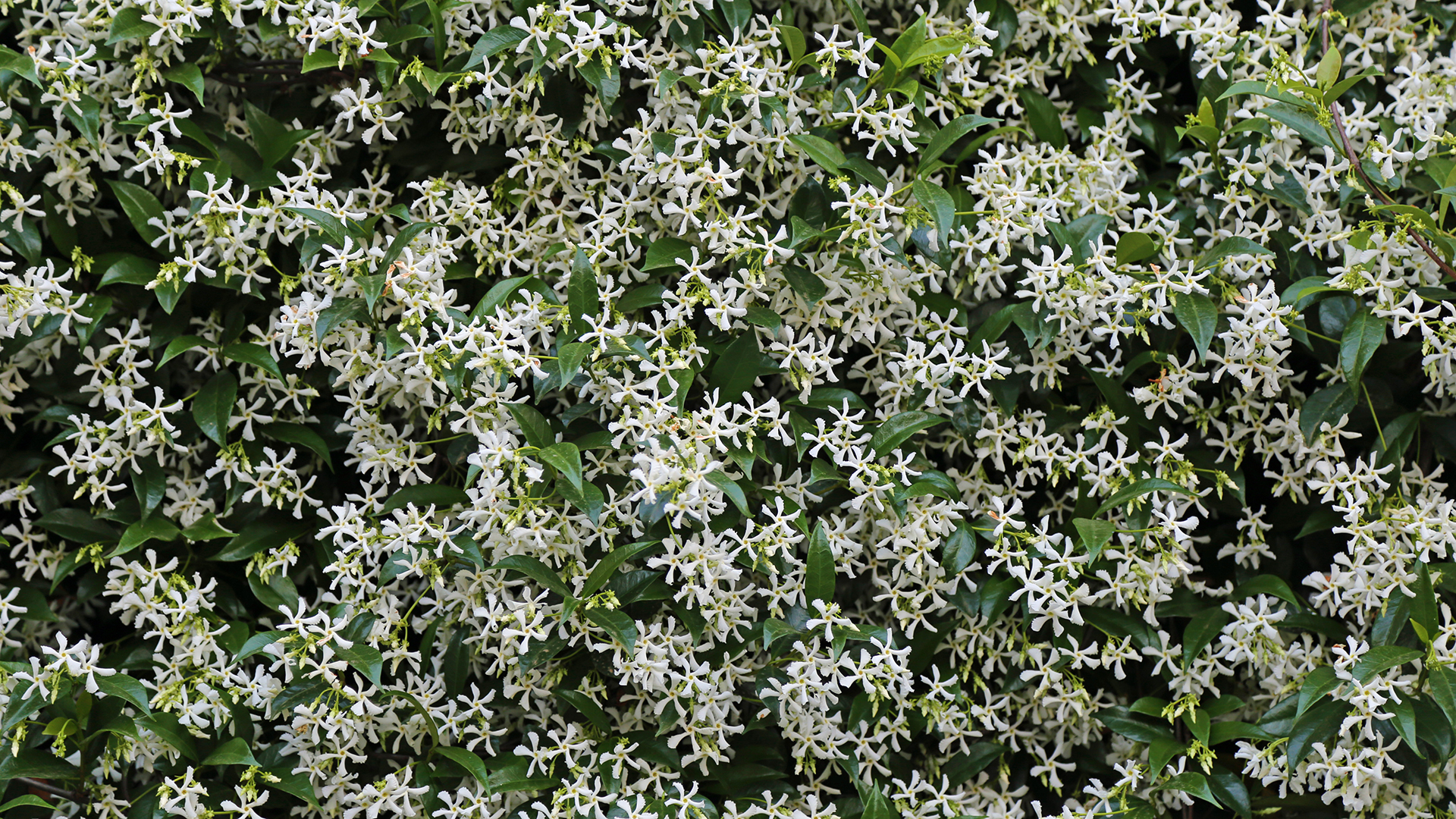
Once you know how to grow jasmine successfully you’ll find it’s an adaptable, tolerant climbing plant that will reward your efforts with a show of delicate flowers that goes on for months.
Prized for its intoxicating summer fragrance and dainty flowers, jasmine is a valuable addition to any garden. It’s a vigorous climber and evergreen types are used to soften boundary walls or fences all year round. You can even opt for star jasmine, for star-shaped flowers.
And if you can plant it near an outdoor seating area you'll be able to enjoy its scent on warm days. In other words, it's a definite must-have on any flower bed ideas wish list.
How to grow jasmine
Below, there's advice and expert tips on how to grow jasmine, plus information on how to grow winter jasmine.
How to grow summer jasmine
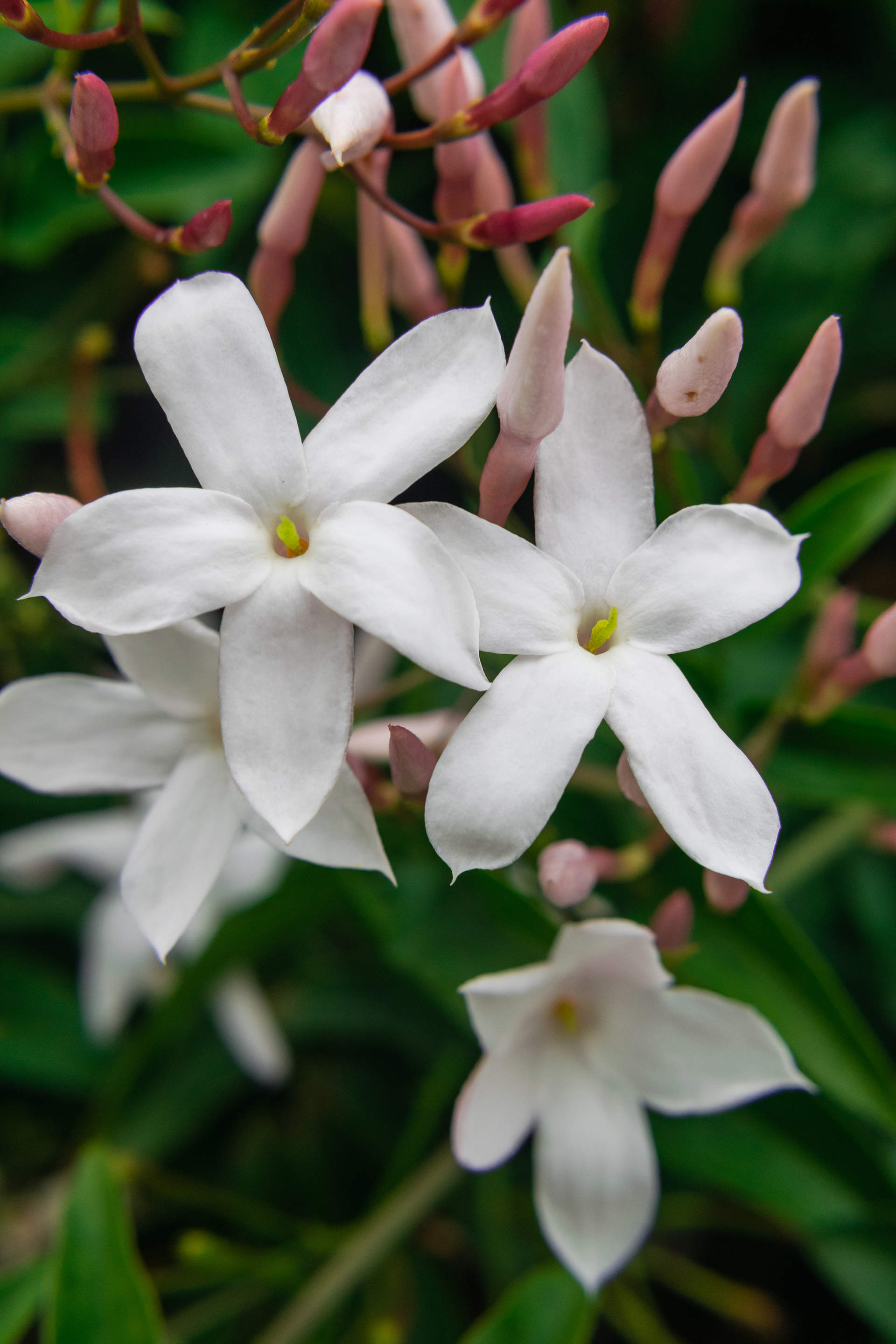
Summer jasmine (jasminum officinale), also known as common or true jasmine, or sometimes poet’s jasmine, flowers through June, July and August, producing a heady scent.
Jasmine thrives in well-drained soil in a sheltered part of the garden. It prefers full sun but can also tolerate part shade. It’s deciduous – sheds its leaves – but in sheltered positions becomes semi-evergreen. For those living in smaller spaces, why not learn how to grow jasmine in pots, for a fragrant container display?
Is jasmine easy to grow?
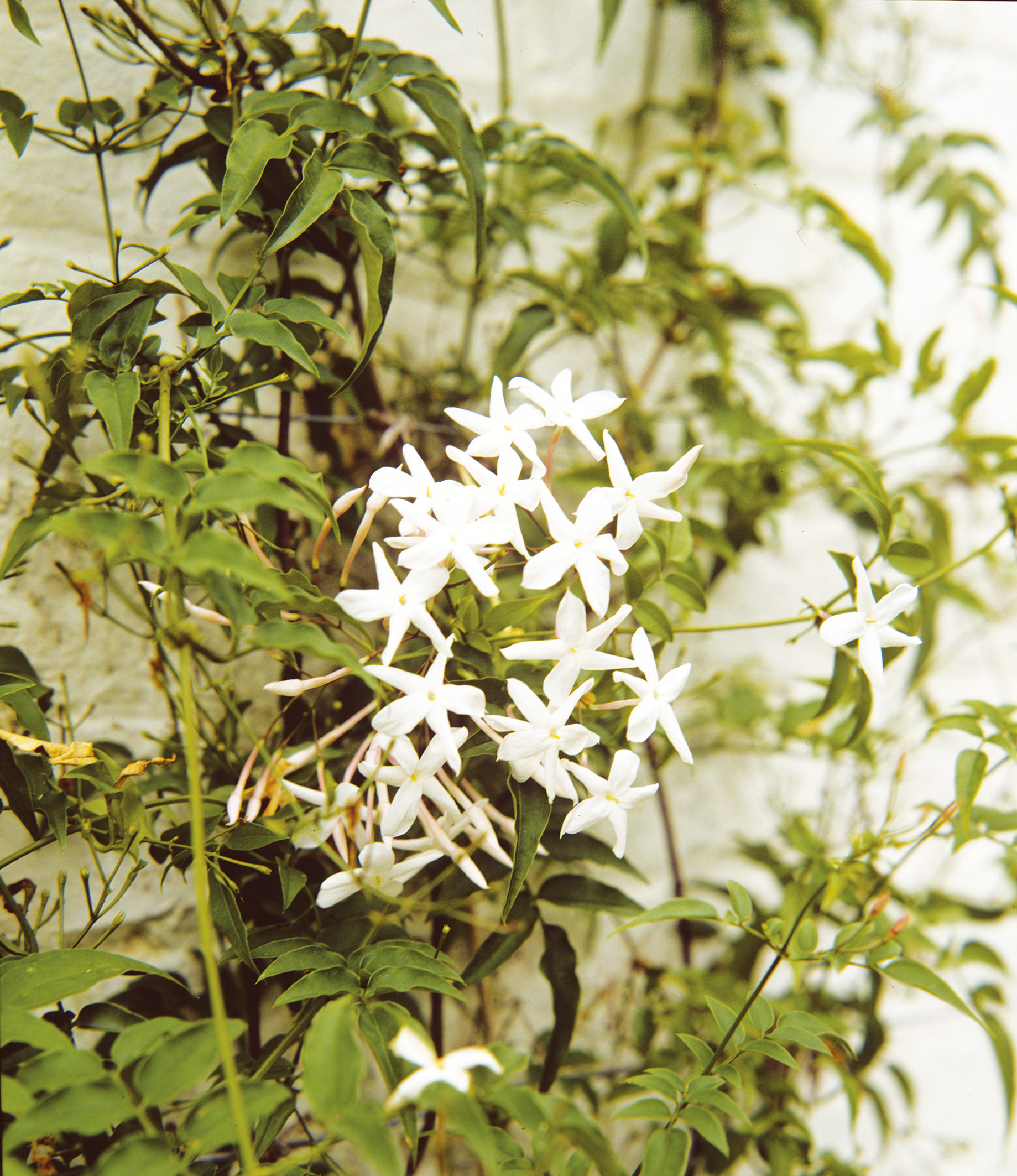
Jasmine is very easy to grow. If you’re buying a jasmine plant from a nursery or garden center, look for one with vigorous healthy shoots and leaves. You can plant summer jasmine in your garden in spring or autumn, although less-hardy varieties should be protected or kept in a greenhouse over winter. Most varieties survive well in a sheltered spot outside.
You can also plant jasmine in pots – in fact, for us, it's one of those container gardening ideas you can successfully take with you when you move home – or relocate a seating area. You will need to provide some kind of wigwam support, and a generous-sized container of at least 45cm diameter. Fertilizing jasmine can also be a good idea to encourage blooming during the growing season.
How to plant jasmine
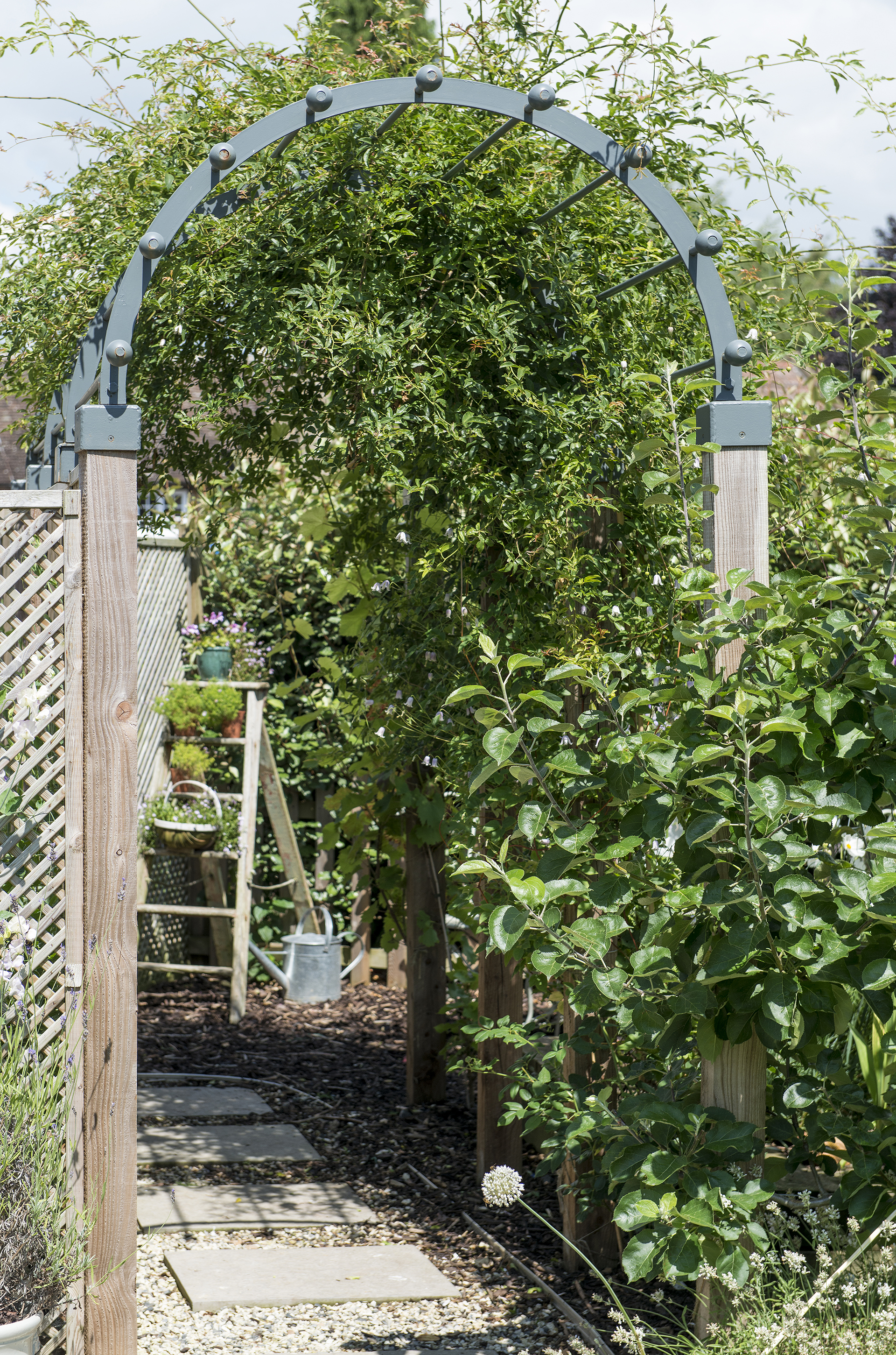
Gardeners’ World's TV gardening expert Monty Don is a big fan of jasmine. ‘When it’s in full glory it can cover a wall in this mass of flower that repeats,' he says. It's a tender plant, but sited next to a south-facing sunny wall, it has the protection and warmth it needs. Monty Don adds grit to improve drainage, saying 'You can’t go wrong improving the drainage for any plant that loves being baked in sunshine.’
To get your jasmine off to a good start, dig your planting hole slightly bigger than the pot, adding grit to improve the drainage, and compost or well-rotted manure to feed the plant and boost its flower power.
Backfill with soil to the same level as it was in its original pot. If you’re planning to train it up a support, young plants will need a cane angled towards the support to point them in the right direction. Keep new and established jasmines healthy and productive by feeding a high-potash feed once a week in summer.
Does summer jasmine need support?
Summer jasmine doesn’t need support, as it will twine its way upwards – perfect if you're looking for easy to train, scented flowers to complement the pergola ideas you're considering. However, you may prefer to use some supports to train it to grow where you want it and keep them in check.
We asked gardening expert Jenny Williams for her advice on how to grow jasmine and support it successfully. Along with her husband Tom, Jenny designed, planted and tends the garden at The Laundry in Wales and documents the garden on her Instagram account @thelaundrygarden.
Jenny advises that ‘once established, jasmine can become quite large vigorous climbers. The best way to support them is to either grow them up a tall strong sturdy pergola frame or, if growing against a wall, use taut horizontal wires, held by vine eyes, spacing the wires approximately 30-40cm apart with the lowest wire being 30cm above soil level.’
Recommended varieties of summer jasmine
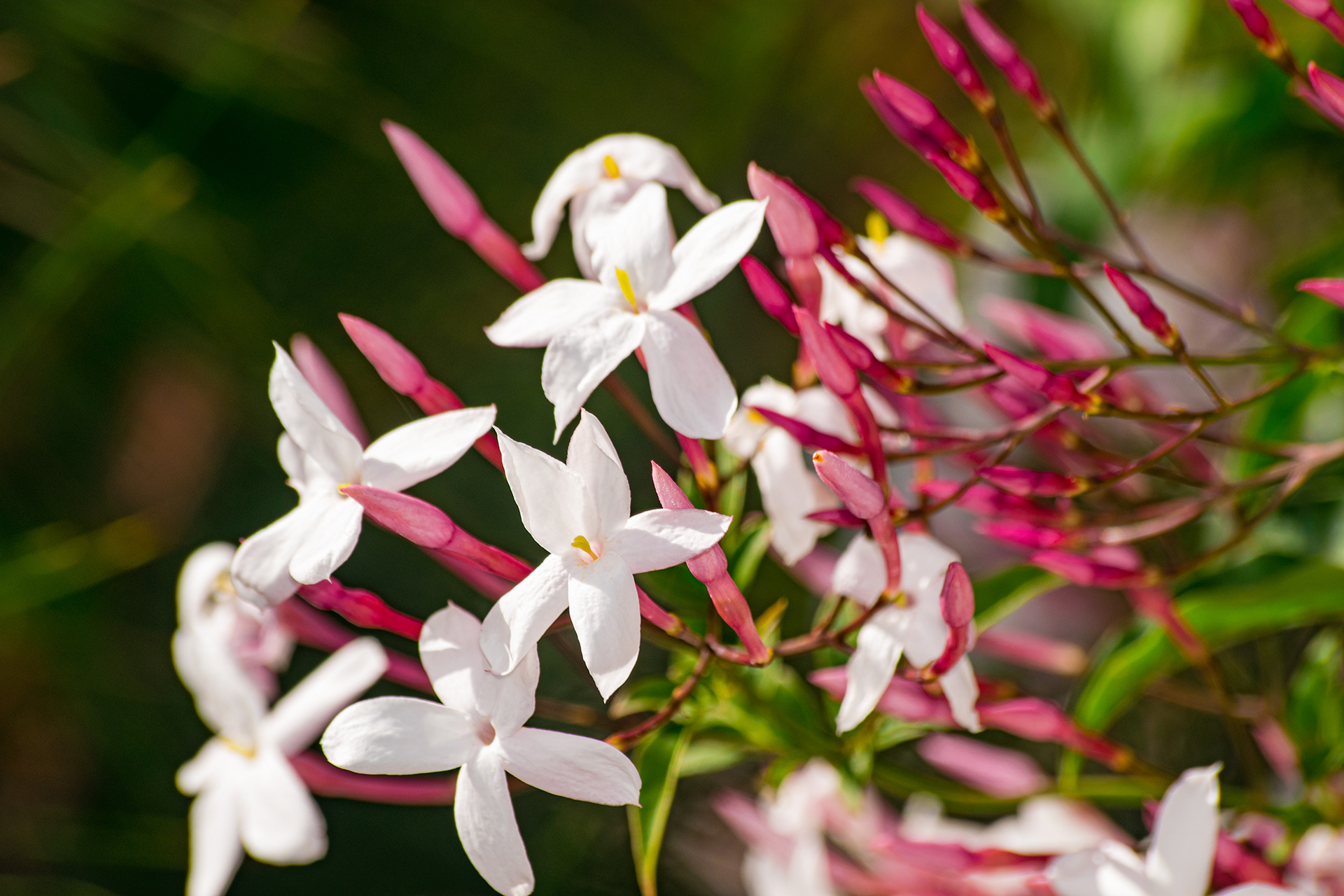
Jenny Williams suggests her two favorite varieties of summer jasmine which she grows in her own garden in Wales:
Jasminum officinalis ‘Aureum’ (Golden Jasmine); ‘This has bright golden foliage and pure white scented spring/summer blossom’ says Jenny.
And 'Jasminum officinale Argenteovariegatum, which has grey green leaves that are margined with cream fragrant white flowers that fllower all summer. It is happily climbing against a south facing wall by the entrance to my potting shed.’
Another pretty variety to try is the pink jasmine, jasminum polyanthum, but keep it in check as it can grow as high as 20ft. In warmer zones this may flower all year round.
Good companion plants for summer jasmine
‘If your white-flowered summer jasmine is climbing a pergola or trellis, it will look even better with another flowering plant growing through it,’ says Melanie Griffiths, editor of Period Living magazine.
‘Fellow climbers such as clematis are ideal. Varieties with dark purple flowers, such as Clematis x jackmanii or Clematis x “Julka” would provide a dramatic contrast to the jasmine's white flowers. Jackmanii grows to 12 feet (3.7 m), while Julka reaches 8 feet (2.4 m).’
Does summer jasmine need pruning?
Yes, says expert Jenny Williams. She advises ‘to keep them in check and looking their best, the best time to prune is just after flowering in late summer or early autumn. Cut back flowered stems to a strong side shoot lower down, always keep in mind when pruning winter and summer jasmine that they flower on previous years growth, so pruning after flowering gives the new growth time to mature for the next season.’
Trimming the tops of the vines will also encourage a fuller, more bushy growth.
How to grow winter jasmine
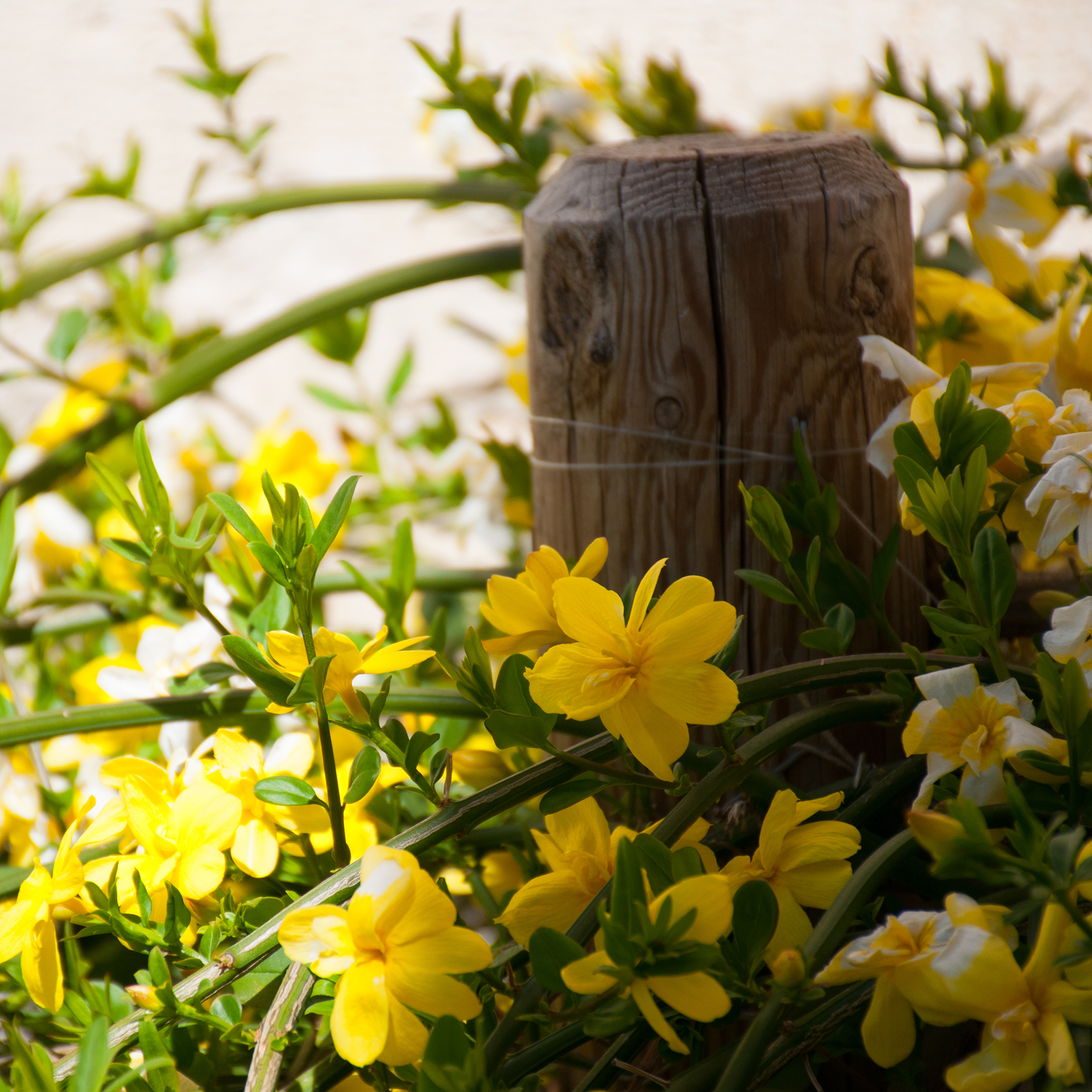
Winter jasmine, or jasminum nudiflorum is a real ray of sunshine throughout the long winter months. You may spot the first flowers as early as November and they will keep coming right through to March. Winter jasmine brightens the dark days with its masses of little yellow star-shaped flowers on dark green foliage.
What conditions do you need to grow winter jasmine?
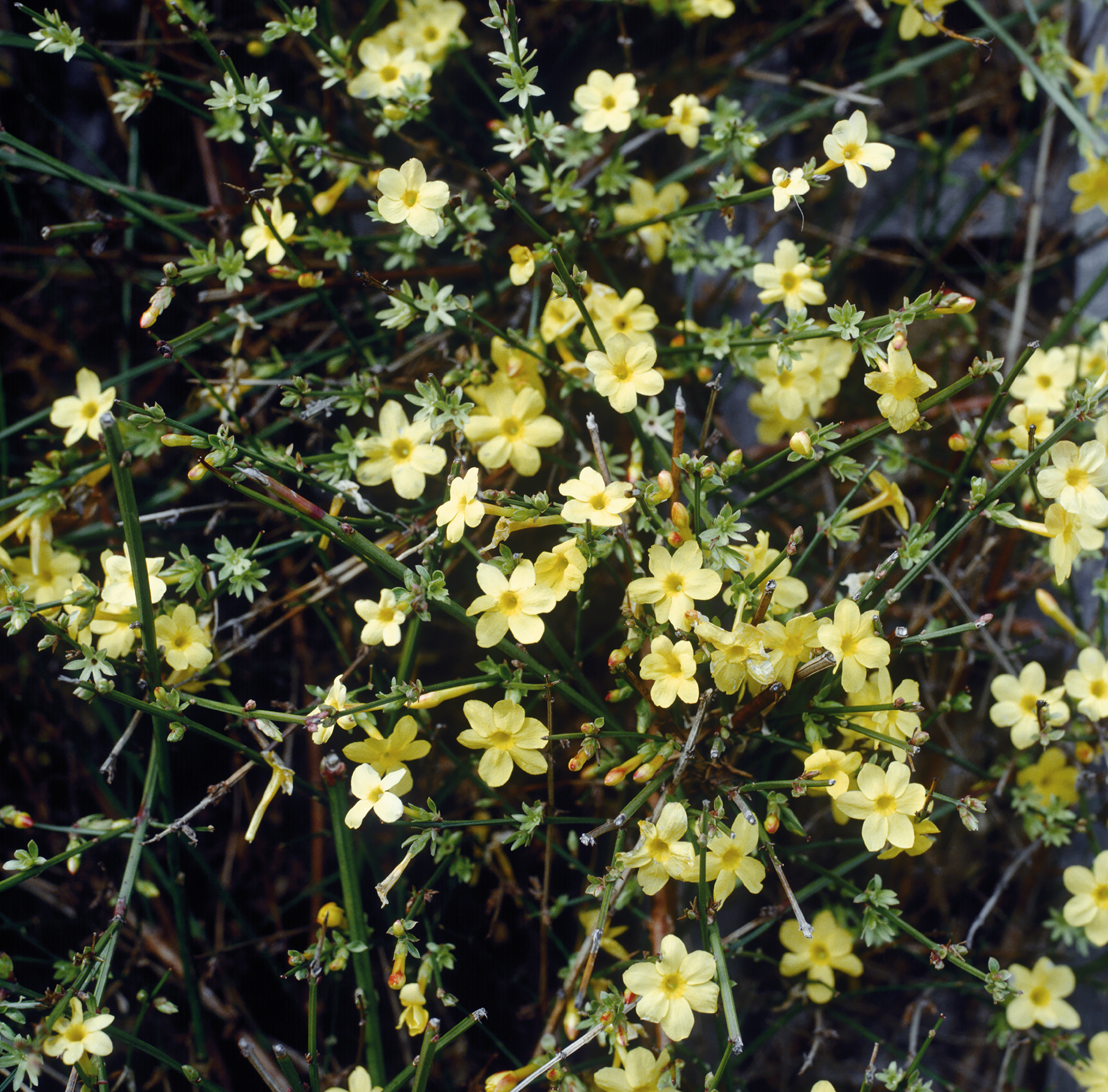
Winter jasmine is frost hardy and easy to grow. It shares its summer cousin’s preference for full sun in fertile, well-drained soil but copes well in part shade.
However, unlike summer jasmine, this winter shrub’s stems are stiff and do not twine, so it is best grown with some kind of support – either a trellis or wires.
Jenny Williams says, ‘It’s really important to try and keep tying in the new growth in order to create a more pleasing look, it can be pruned once the flowers have faded in the spring, by doing this it gives the new growth time to mature and flower next year.’
When do you plant winter jasmine?
The best time to plant winter jasmine is in autumn or winter, if you’re planting at other times make sure you avoid extremes of heat and cold.
Winter jasmine has hardly any fragrance, however, bees love it and it provides an essential source of winter pollen for wildlife during winter months when there's not much else around. Another good reason to plant this cheery shrub.
What is false jasmine?
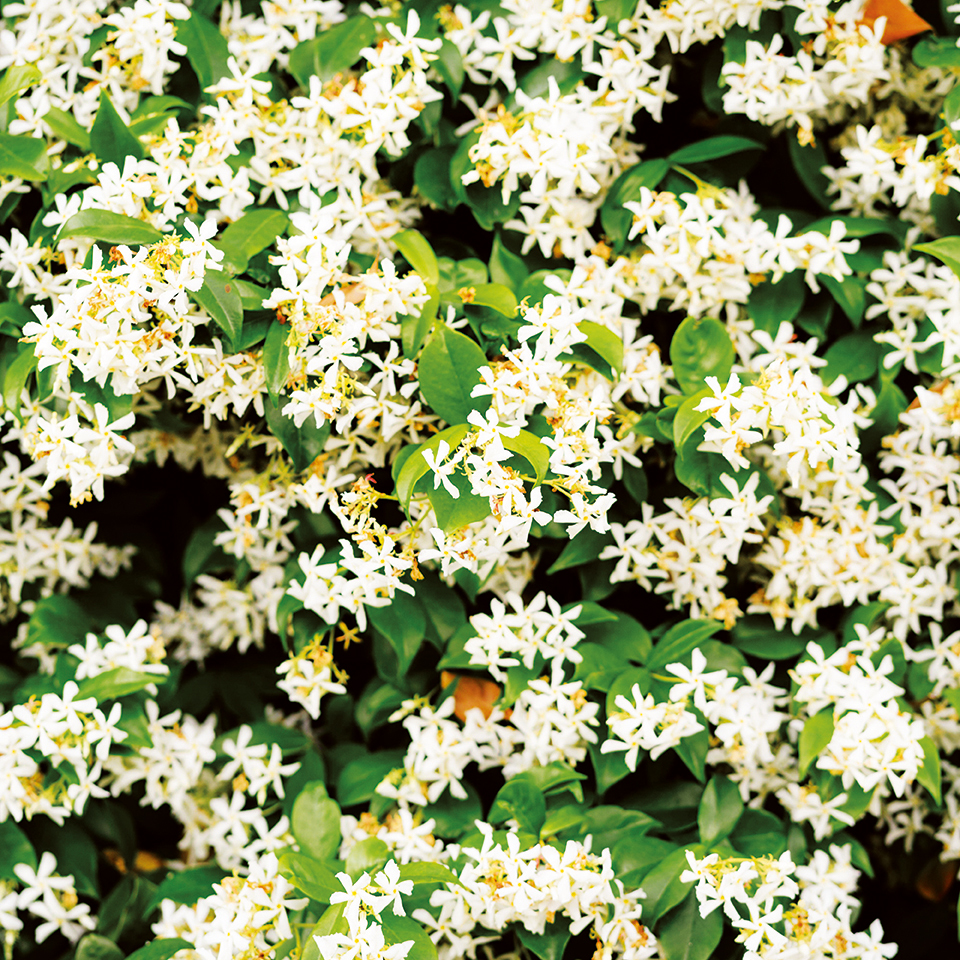
False jasmine, sometimes called star jasmine or confederate jasmine (Trachelospermum jasminoides) is not part of the jasminum family at all but is often referred to as a jasmine because of its star-like flowers and heady jasmine-like scent. It flowers through the summer and has glossy oval leaves and shares the same growing conditions as common summer jasmine.
Whichever jasmine you choose to plant, put it in the right place and you'll be rewarded with a wealth of delicate star-shaped flowers, and for summer flowering varieties you'll have the added bonus of their fragrance, too.
Sign up to the Homes & Gardens newsletter
Design expertise in your inbox – from inspiring decorating ideas and beautiful celebrity homes to practical gardening advice and shopping round-ups.
Karen sources beautiful homes to feature on the Homes & Gardens website. She loves visiting historic houses in particular and working with photographers to capture all shapes and sizes of properties. Karen began her career as a sub-editor at Hi-Fi News and Record Review magazine. Her move to women’s magazines came soon after, in the shape of Living magazine, which covered cookery, fashion, beauty, homes and gardening. From Living Karen moved to Ideal Home magazine, where as deputy chief sub, then chief sub, she started to really take an interest in properties, architecture, interior design and gardening.
-
 Plants never to grow next to fruit trees
Plants never to grow next to fruit treesExpert advice on which plants to keep away from fruit trees to encourage a healthy harvest
By Jacky Parker Published
-
 Martha Stewart's tips for arranging daffodils are unbelievably simple and effective – it's the only flower advice you need this springtime
Martha Stewart's tips for arranging daffodils are unbelievably simple and effective – it's the only flower advice you need this springtimeMartha shows us that we can create gorgeous bouquets of this seasonal flower by simply trimming the stems and placing them in specific vases
By Hannah Ziegler Published
-
 Water garden ideas – 9 ways to introduce soothing water to your outdoor space
Water garden ideas – 9 ways to introduce soothing water to your outdoor spaceFrom cascading fountains to wildlife ponds, there are plenty of ways to create a tranquil water garden
By Leigh Clapp Published
-
 How to grow poppies
How to grow poppiesFind out how to grow poppies to enjoy the beauty of these brightly colored tissue paper-like blooms
By Leigh Clapp Published
-
 How to grow delphiniums from seed
How to grow delphiniums from seedFind out how to grow delphiniums from seed and enjoy these colorful cottage garden favorites filling beds and borders
By Leigh Clapp Published
-
 How to grow ferns – when and how to plant and care for them
How to grow ferns – when and how to plant and care for themLearn how to grow ferns to enjoy the texture and form of these versatile plants in many areas of your garden
By Leigh Clapp Published
-
 How to grow sweet peas from seed – in borders and pots
How to grow sweet peas from seed – in borders and potsFind out how to grow sweet peas and where to enjoy their wonderful color, ruffled blooms and sweet fragrance in your garden
By Pippa Blenkinsop Published
-
 How to make fat balls for birds – easy steps feed our feathered friends
How to make fat balls for birds – easy steps feed our feathered friendsLearn how to make fat balls for birds to ensure their wellbeing throughout the winter
By Holly Reaney Published
-
 Planning a kitchen garden – from layouts to picking the best crops
Planning a kitchen garden – from layouts to picking the best cropsPlanning a kitchen garden is easy with this expert advice – whether yours is in beds, borders or a dedicated patch – you're guaranteed success
By Leigh Clapp Published
-
 How to grow cosmos – expert tips on when and where to plant these flowers
How to grow cosmos – expert tips on when and where to plant these flowersLearn how to grow cosmos to add bright color in your garden from summer through to fall with their beautiful blooms
By Leigh Clapp Published